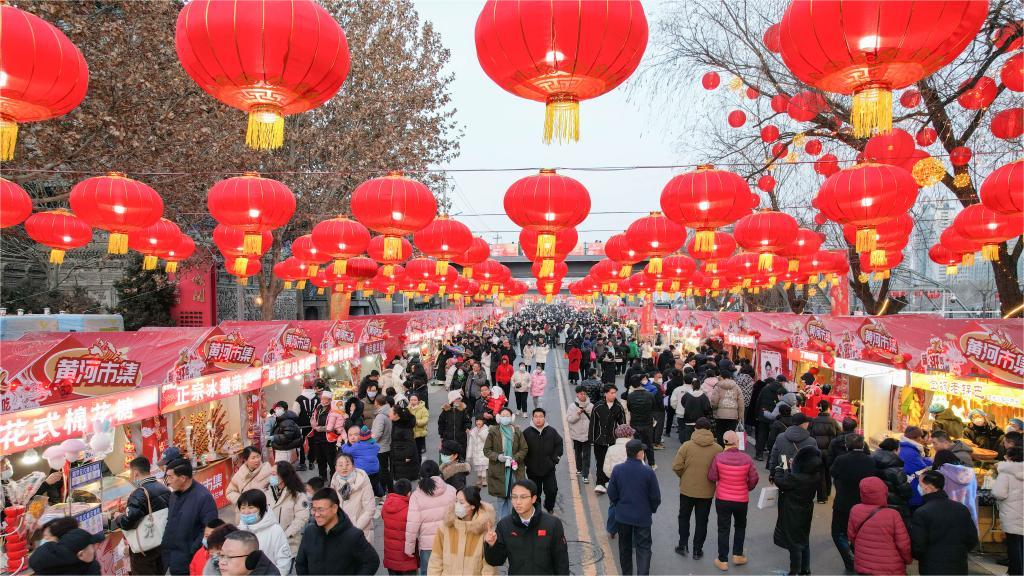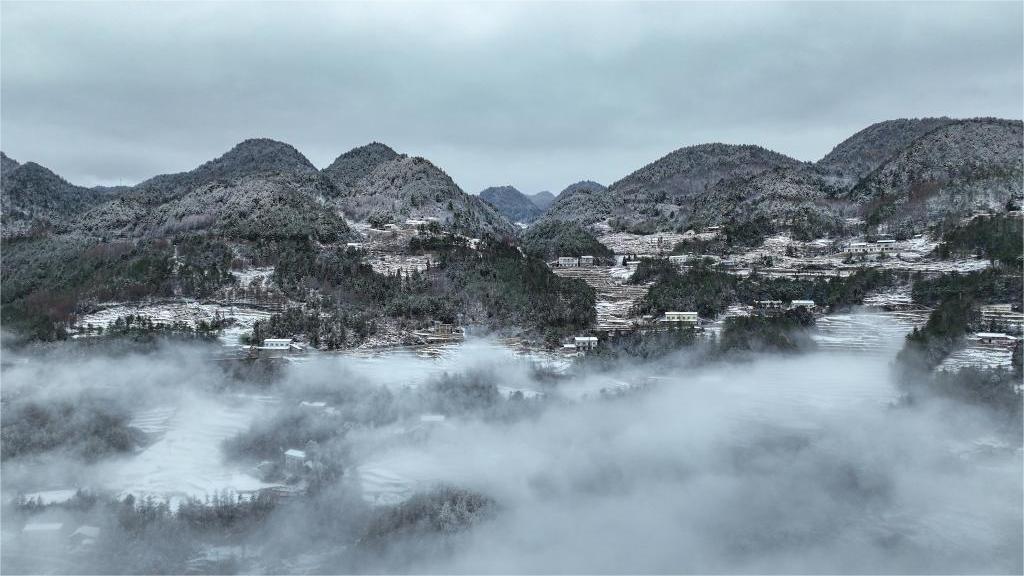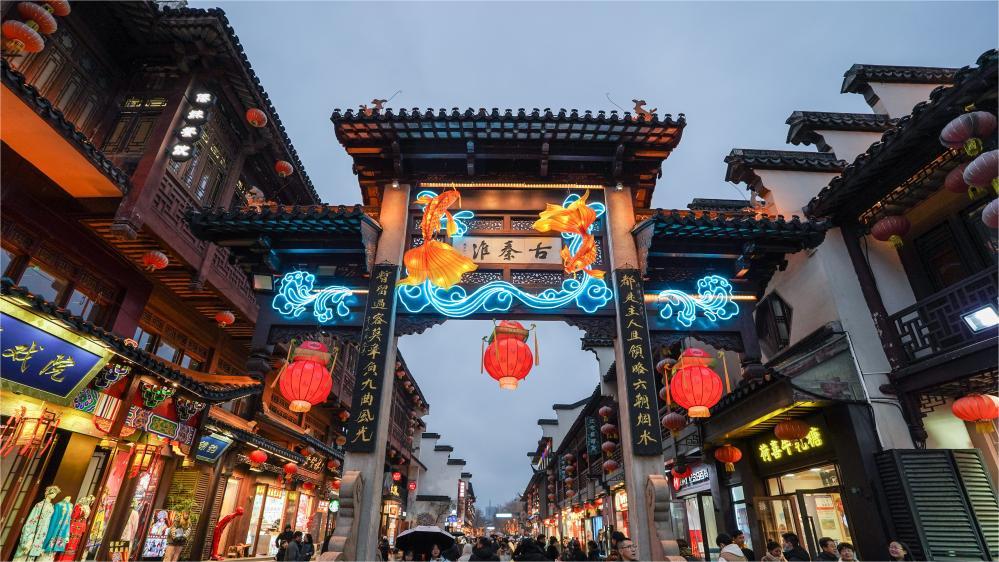Multicultural residential compound's dual festivals in Lhasa
LHASA, Feb. 15 (Xinhua) -- As the first rays of sunlight bathed the ancient city of Lhasa, the capital of southwest China's Xizang Autonomous Region, a residential compound was filled with traditional new year greetings in different languages -- "Chunjie Kuaile" (meaning "Happy Spring Festival" in Mandarin) and "Losar Tashi Delek" (meaning "Happy New Year" in Tibetan).
The compound named Ngangpa Kangchung, a Tibetan-style residence in downtown Lhasa, is home to some 70 residents from Han, Tibetan, Hui and other ethnic groups.
As the Tibetan New Year coincided with the Lunar New Year, also known as the Spring Festival, on Saturday this year, residents in the multicultural compound savored delectable traditional dishes of different ethnic groups and celebrated the two festivals together.
Sun Jianxue and his wife Sonam Badran treated their visiting neighbors with "chema," a wooden box filled with colorful grains and barley flour, symbolizing good luck and prosperity in Tibetan culture.
"Neighbors from various ethnic groups of the compound have integrated deeply, just like butter and tea leaves in buttered tea," said Sun, 62.
Sun, a Han retired road construction worker from Gansu Province, married his Tibetan wife 34 years ago when he worked in Xizang. Over the years, he has developed a taste for Tibetan food like tsampa and buttered tea. He also got used to making traditional fried snacks for the Tibetan New Year.
On Saturday, Sun cooked beef noodles, a specialty of his hometown, for his family. They also enjoyed hot and fresh hand-grabbed rice while visiting their Hui neighbors.
Rigzin, who runs a small grocery store on the first floor of the compound, said the neighbors have been living there for decades and are so familiar with each other.
"If any household in the compound is in urgent need of oil, salt, soy sauce, or vinegar for cooking, my son will deliver to their doorstep in no time upon receiving their call," she said.
Xizang has long had a fine tradition of exchanges, communication, and integration among ethnic groups since ancient times. In the seventh century, Tibetan King Songtsen Gampo married Princess Wencheng of the Tang Dynasty (618-907), starting a new chapter of building ties among different ethnic groups.
Now, about 88 percent of the region's population of 3.65 million are from Tibetan and other ethnic minority groups.
In Lhasa alone, there are over 100 such multicultural compounds like Ngangpa Kangchung.
Ma Chenghu, a Hui ethnic, has been Sun's neighbor for over 20 years.
Whenever Sun and his wife need to change their gas cylinder, Ma is ready to help the elderly couple, and then they will have a meal together.
"A close neighbor is better than a brother far off," Sun said.
Photos
Related Stories
- Butter sculptures prepared to greet Tibetan new year
- World’s first cloned endangered Xizang cattle species born
- Xizang Campus Diary-Episode 3: Dream: Rising from the Plateau
- Xizang Campus Diary-Episode 2: On Campus: Warm and colorful life
- Xizang Campus Diary-Episode 1: Inside the classroom: Integration of modernity and traditions
Copyright © 2024 People's Daily Online. All Rights Reserved.









